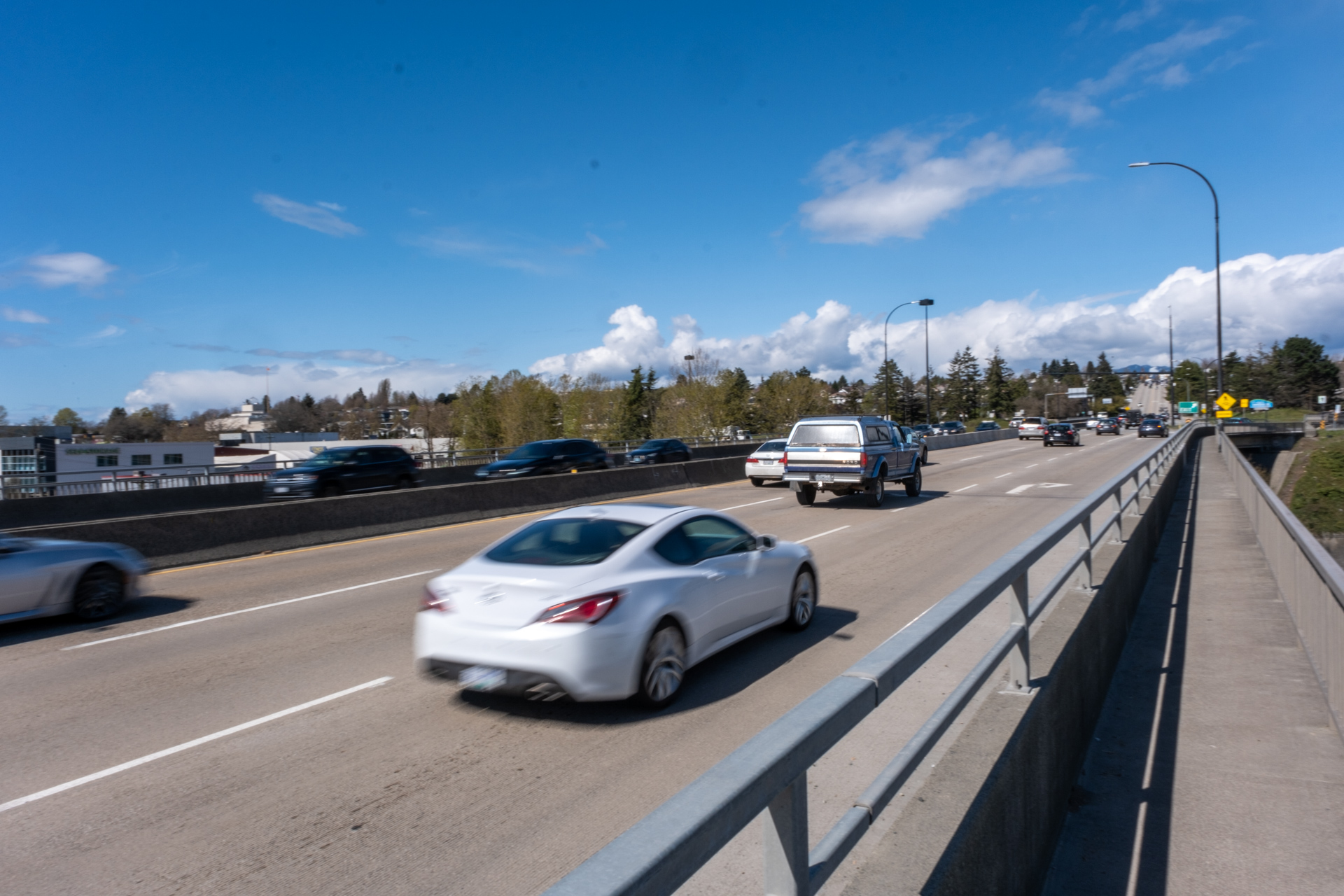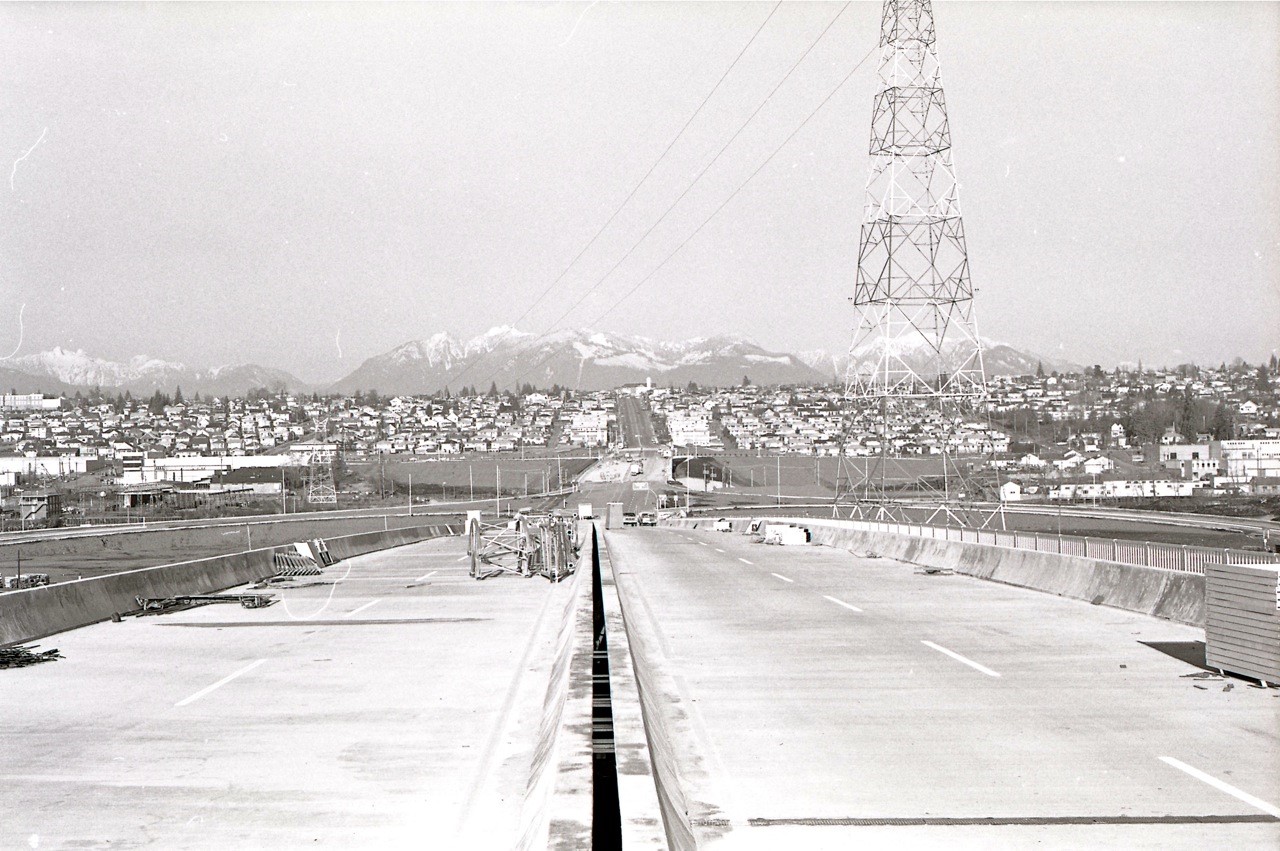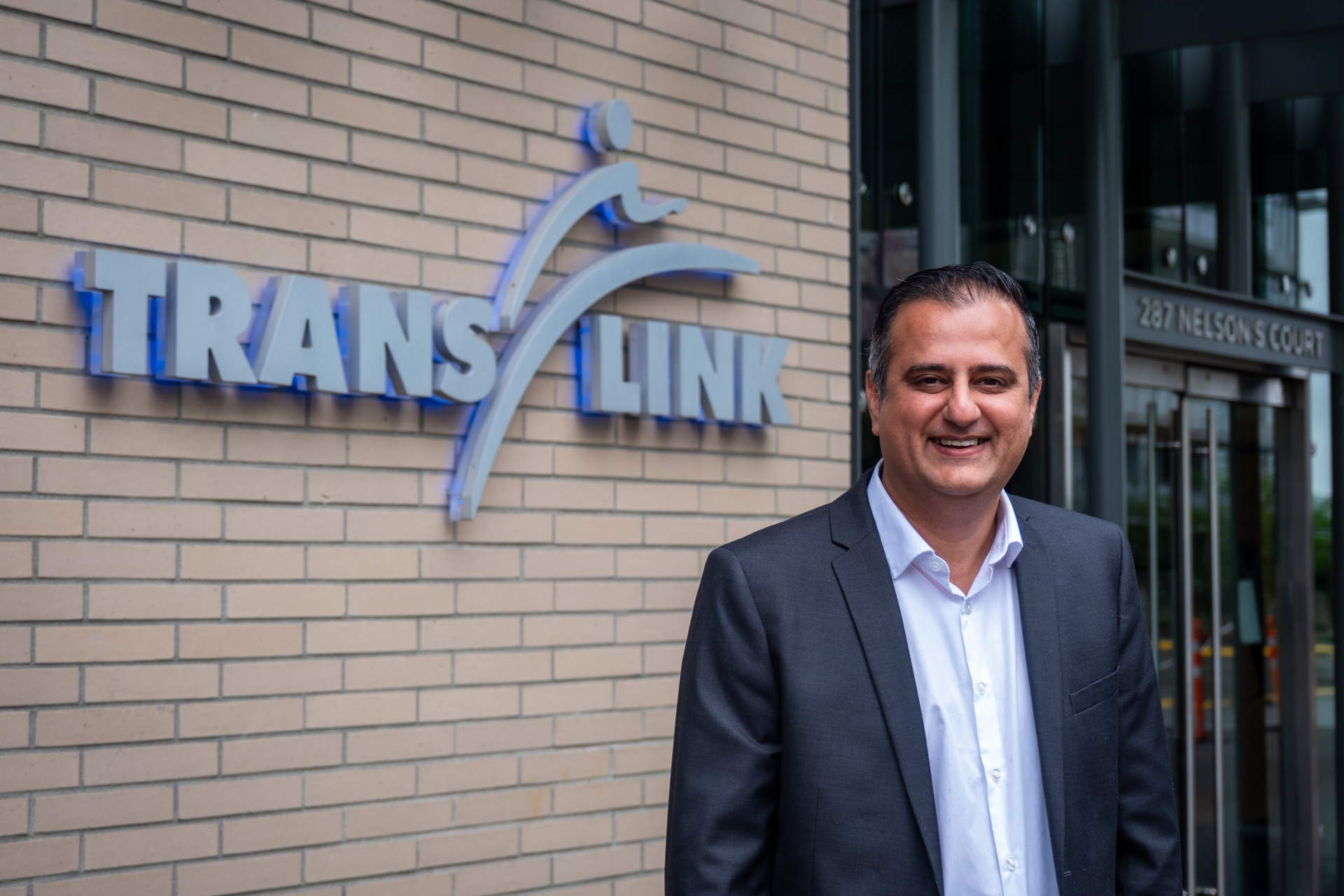Knight Street Bridge: the first bridge repaved with innovative material
Knight Street Bridge: the first bridge repaved with innovative material

As you travel across the Knight Street Bridge, you’re driving on innovation.
It’s the first and longest bridge span in Metro Vancouver and the province to be paved with polyester polymer concrete (PPC). It’s an innovative compound that is more durable, has higher skid resistance under all-weather conditions, and quicker to cure compared to asphalt and concrete.
This was a core component for the second phase of the Knight Street Bridge Rehabilitation Project. Here’s what we accomplished:
Replacing original bridge bearings with new bearings to ensure the continued integrity of the structure.
Milling and repaving the top layer of the concrete deck with polyester polymer concrete (PPC) overlay to preserve the deck.
Installing the railing separating vehicle lanes from the sidewalk to provide more protective separation between vehicles, cyclists, and pedestrians.
A critical crossing for Metro Vancouver
Step inside your local store and you’ll be hard-pressed to find something that didn’t arrive by truck.
That’s why as a region separated by water, bridges play a critical role in connecting Metro Vancouver and ensuring the food, clothing, and all other goods we need arrive at our stores.
The Knight Street Bridge stands out as it’s the main artery between the Port of Vancouver’s downtown terminals — where goods arrive on container ships, the industrial areas in north and south Richmond, Tilbury as well as Deltaport. Highway 91 and Highway 99 also feed into the bridge.

This makes the Knight Street Bridge the second busiest bridge in Metro Vancouver and the Fraser Valley with the average number of 110,000 vehicles and 10,000 trucks crossing each day — a critical link.
Aside from being a busy corridor for vehicles and trucks, it’s also an important corridor for our buses. This includes the 430 Metrotown/Richmond–Brighouse Express, which is a key connection between Richmond and Burnaby.
The Knight Street Bridge’s importance to transit riders and the region’s economy is not lost on Naz Nazir, PhD, P.Eng., PMP — a project manager at TransLink, who was tasked with overseeing the rehabilitation project.
Every year we complete an annual inspection on the Knight Street Bridge and the four other bridges TransLink owns and operates: the Golden Ears Bridge, Pattullo Bridge, Westham Island Bridge, and the Canada Line Bike and Pedestrian Bridge.
An inspection in 2017 revealed that, while the Knight Street Bridge was safe and in good condition, it was starting to show its age. After all, it opened in 1973 and is now more than 50 years old.

It was discovered there was starting to be delamination, which is like cracks that occur below the surface of the concrete deck. This happens when water gets into the concrete over time. Think of delamination as like paint peeling on a fence.
The inspection also found the original bearings needed to be replaced as well. Bearings are like cushions that the bridge girder ends sit on. It allows the bridge to move a little bit when there’s thermal expansion or contraction and reduces stress on the structure.
Just like how you might need to repaint a fence at your home or replace a kitchen countertop, the Knight Street Bridge needed some TLC.
Faster, stronger
“There were two things happening in the deck rehabilitation,” explains Naz. “We were interested in repairing the delamination in the concrete and then we wanted to place an overlay on top to seal the concrete.”

Since its opening, crews have sealed the bridge with asphalt, and they have continued to patch it with asphalt whenever potholes appear.
Naz was challenged to find ways to complete the much-needed work that minimizes impact to this critical crossing now and into the future.
Enter polyester polymer concrete.
It’s a compound material that, while widely used in other places as an overlay for the concrete bridge decks, hadn’t been used before in British Columbia.
Like many other construction materials, polyester polymer concrete can only be placed in specific conditions. It must be dry and temperatures are preferably above 5°C.
What’s special about the compound is it lasts longer compared to asphalt, up to 30 years. It also cures — or dries — fast so vehicles can drive on it within a few hours.
“It’s curing time is 2-to-4 hours,” explains Naz. “It cures and gets its strength so fast, so we can finish the work overnight.”
That’s exactly what happened throughout the duration of the rehabilitation project.
There were single lane closure in both directions from 10 p.m. to 5 a.m. weekdays and from 9 p.m. to 9 a.m. on weekends and holidays.
“Polyester polymer concrete helped us in reducing the disruption to the traffic,” says Naz. “Especially in the morning when traffic demand is huge on the bridge.”
Looking ahead, Naz expects the polyester polymer concrete to be a gamechanger for maintenance. As any repairs, like the rehabilitation project, can be done overnight in a matter of hours.
For example, for any pothole repairs, the team no longer needs to bring heavy equipment in.
“You don’t need to bring in a truck with asphalt, a paver on the deck to place it and a roller to finish the surface,” explains Naz. He adds by using polyester polymer concrete, the team can use rolling lane closures.
This is where instead of closing the length of the bridge for work, they only close a small segment and then quickly re-open that segment when they move to another segment.
A greater Vancouver
Knowing he can make a difference in people’s lives and Metro Vancouver through projects like this is what motivates Naz as a member of TransLink’s small but mighty Bridge Operations team.
As Metro Vancouver’s transportation authority, TransLink invests in regionally significant roads, cycling, and pedestrian infrastructure through our Local Government Funding Programs to better connect Metro Vancouver communities.
This includes owning and operating five bridges: the Pattullo Bridge, Golden Ears Bridge, Westham Island Bridge, the Canada Line Bike and Pedestrian Bridge, and the Knight Street Bridge.
A structural engineer by trade, Naz joined TransLink because he wanted a job that was larger than simply the role.
“TransLink connects the region and enhances its livability by providing a resilient transportation infrastructure, embraced by the people of the Lower Mainland, and we do our work within a sustainability framework,” he says. “I really enjoy working at TransLink.”





